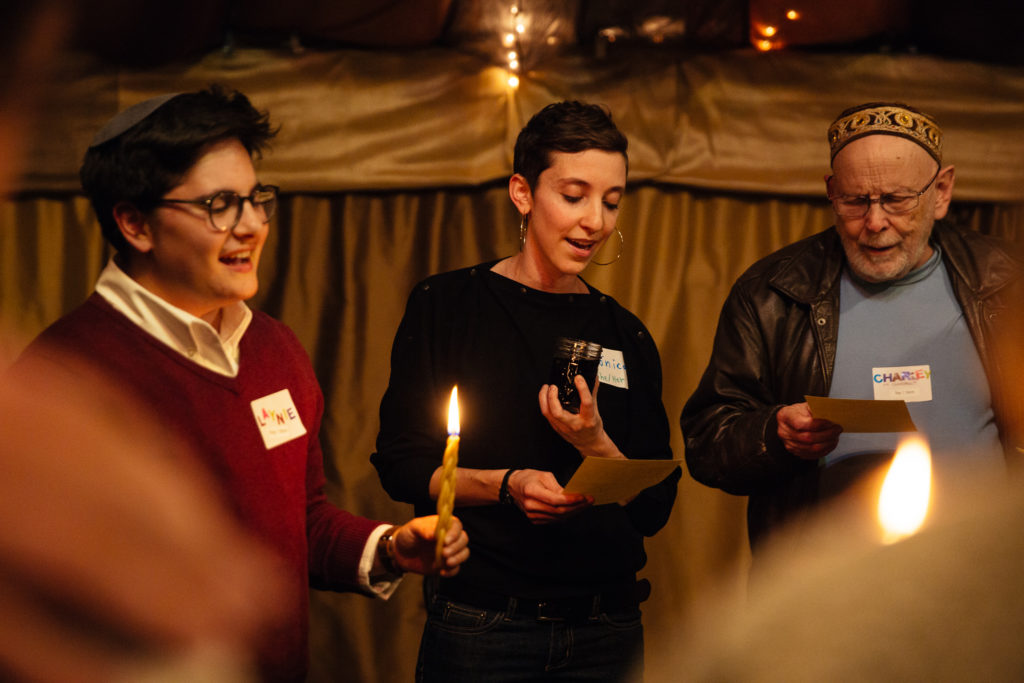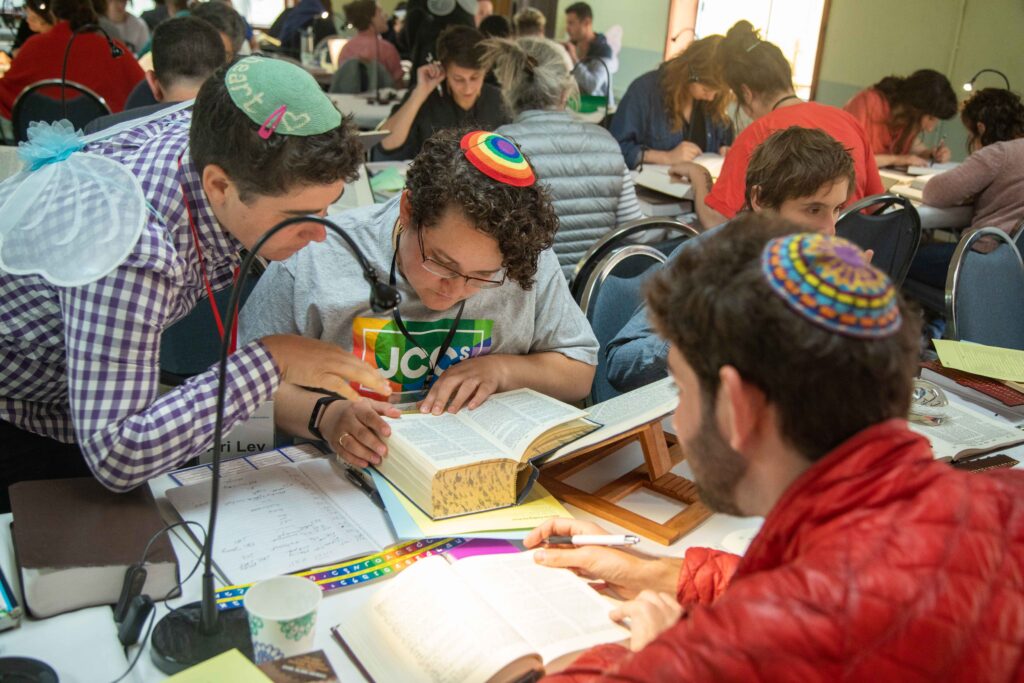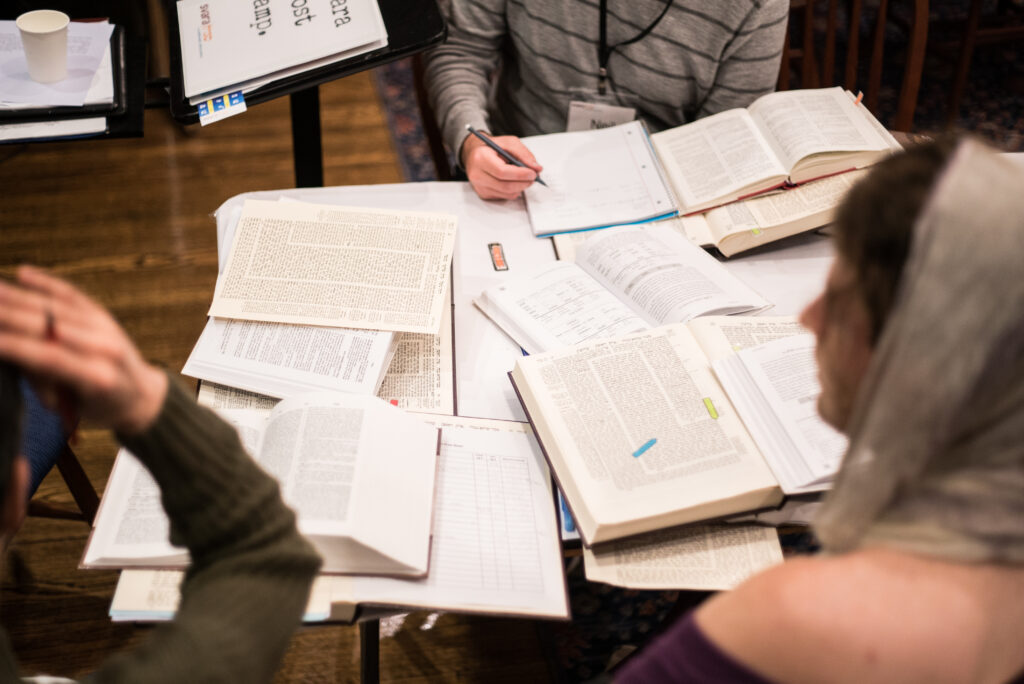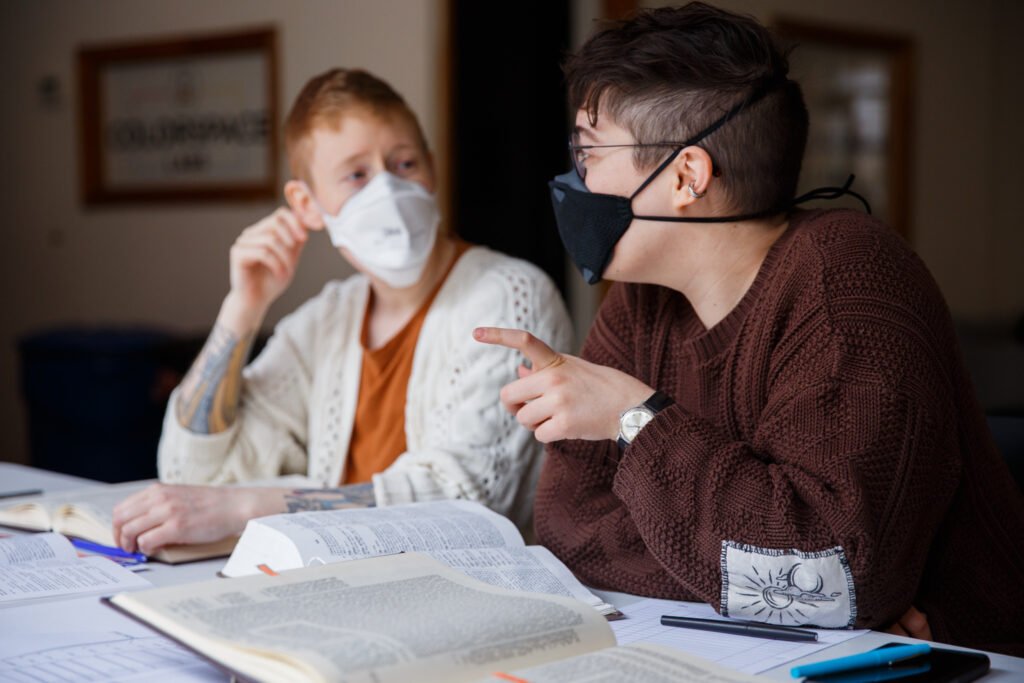A few weeks ago, as the sun set and the stars appeared in the darkening sky, I headed out to synagogue. The lights in the sanctuary were low, and I slid off my shoes and sat on the ground. It was Tisha B’av. There was so much to mourn. I opened my heart to the overwhelming grief I feel for the world: gun violence, Gaza, wildfires and drought, Ukraine, the global refugee crisis, racist policing, legislative attacks on trans lives and reproductive justice. I mourned these acts of supremacy, of separation from our divine oneness, that have corrupted the human species. I leaned heavy into the pleading melodies, and let my own walls come down.
On Tisha B’Av, the walls around us and inside of us are meant to crumble. All that we’ve built over the course of the year cracks open, like a seed forged in a forest fire. “The year has been building itself up,” Rabbi Alan Lew, z’’l describes, “and now it begins to let go– the natural cycle of the cosmos, the rise and fall, the impermanence and the continuity all express themselves in this turning.” This begins a soul pilgrimage, one that opens with Tisha b’Av, intensifies on Rosh Chodesh Elul, collects energy on Rosh Hashanah, deepens on Yom Kippur, and culminates when we feel ready again to construct a humble wall on Sukkot.
Now we are officially in it– the great season of turning.
The melody I grew up singing this time of year goes, “Return again, return again, return to the land of your soul.” The root of teshuvah is שוב, meaning “to go back, to come back, to return, to repent.” By doing teshuvah, the work of repair and return, we circle back to right action and to our values. Like the refrain of a meditation teacher, teshuvah invites us to “come back to center” when we’ve strayed from who we really are.
This year, as I sat on the floor and felt the gates swing open, as the walls came down and I readied myself for the season of teshuvah, I began to feel anxious. A confusion came over me, a feeling of being totally unmoored.
Living in late-stage capitalism means that something is ending, something is beginning, and our future is unclear. As I look out around me, I can tell that ten, twenty, or thirty years from now, much of the world as I’ve come to know it will be unrecognizable to me. Amidst such chaotic motion, with the structures surrounding us in a state of collapse, what is return? How do we drop anchor into our own soul, while the external world spins wildly beyond what we know?
I imagine the Rabbis were asking themselves similar questions in their own era of collapse and rapid change. With Biblical society decimated and the Temple in ruins, what did making teshuvah, “coming back,” mean to them?
Torah teaches that when a person commits a transgression, they should bring an offering to the Temple and confess before God. The words used for such atonement include korban/sacrifice, and hitvada/confession. In contrast, the spiritual practice of teshuvah is first hinted at by the Prophets. Though the Temple still stood for the majority of their time, the prophets emphasized a different path back to center. לְכוּ וְנָשׁוּבָה אֶל ה says Hosea, “Come, let us turn back to God.” (Hosea 6:1) שָׁבוּ מִדַּרְכָּם הָרָעָה, the narrator of Jonah recounts, “[the people of Nineveh] turned from their evil ways.” (Jonah 3:7) With the prophets, repenting begins to take on a directional nature. It has a choreography. The ne’vi’im began to de-emphasize Temple sacrifices as the primary or only way to rectify wrong action, and instead describe a behavioral change of course, a turning back to the path.
As Jewish tradition evolves, the language we use for repentance becomes directional, physical. To return, to sweep around. To bend, to curve. To twist, to revolve. To come back. It is full of motion, it is dynamic, and it’s a bit wild. To transform is to move.
יְהוּדָה בֶן תֵּימָא אוֹמֵר, הֱוֵי עַז כַּנָּמֵר, וְקַל כַּנֶּשֶׁר, וְרָץ כַּצְּבִי, וְגִבּוֹר כָּאֲרִי, לַעֲשׂוֹת רְצוֹן אָבִיךָ שֶׁבַּשָּׁמָיִם.
Yehudah ben Teima said: Be intense as a leopard; and light as an eagle; and swift as a gazelle; and brave as a lion; to do the will of your Great Parent who is in heaven. (Pirkei Avot, 5:20)
Making teshuvah requires us to embody the wisdom and ferocity of the animal world. To be intense, soaring, swift and brave. Not physically per se, but psycho-spiritually. It is work that engages our whole selves, that asks us to be somatically alert, awake to our environment and our relationships. The world is in motion; the world is changing all the time. And we too are in motion. To return to ourselves might mean staying in motion– riding the waves and tides of change, stalking the forest and surfing the wind channels that bring the unknown.
As SVARA-niks, we know that the Rabbis moved through crash and catastrophe with a certain disposition, an Option 3 mentality. As the world collapsed and surged around them, they neither fled nor stayed put.
At the end of the Tisha B’av service, we sing out the last lines of the book of Lamentations,
הֲשִׁיבֵנוּ יְהֹוָה אֵלֶיךָ וְנָשׁוּבָה
חַדֵּשׁ יָמֵינוּ כְּקֶדֶם
Take us back, Holy One, we are eager to return to you.
Renew our days as of old!
חַדֵּשׁ יָמֵינוּ כְּקֶדֶם is hard to translate. It’s a paradox. We ask for renewal, חדש, to be made new. And yet, we ask for it כְּקֶדֶם, like before, as of old. This might be the clearest, most succint articulation of Option 3 that our tradition offers. In a changing world, the Rabbis reached for the past as they moved toward the future. They grabbed onto the wisdom of their ancestors, metabolizing all that they’d been through as a religion and society, and they stayed responsive and open to the radical transformation of the world. They evolved, and we evolve. We move toward the future, but we do so k’kedem. We take our past with us, our hard-earned wisdom, the tools of our ancestors, and we move bravely, swiftly, intensely into the unknown.
After weeks of asking myself, “How do we practice return when everything around us is in chaotic motion?” I learned a text from SVARA Faculty member Rabbi Bronwen Mullin that both returned me to Pirkei Avot’s animal kingdom, and offered me a model for moving forward.
?מַאי טַעְמָא, אָמַר רַבִּי שִׁמְעוֹן, אֵין חַיָּה בָּעוֹלָם עוֹשָׂה כְּמוֹ הַצְּבִי
… בִּזְמָן שֶׁהוּא בּוֹרֵחַ הוֹלֵךְ מְעַט מְעַט, וּמַחֲזִיר אֶת רֹאשׁוֹ לְמָקוֹם שֶׁיָּצָא מִמֶּנּוּ, וּלְעוֹלָם תָּמִיד הוּא מַחֲזִיר אֶת רֹאשׁוֹ לַאֲחוֹרָיו.
In what way, said Rabbi Shimon, is there no animal in the world like the gazelle? For when it runs, it turns its head back to the place from which it came. And forever the gazelle turns its head to what’s behind it. (Zohar II, 14a)
Thank G!d human beings aren’t the only ones who go Option 3! Maybe this is what Yehudah ben Teima meant when he said, “Be swift as a gazelle.” Move toward the future while remembering where you’ve been. Take what’s usable with you, as a tool and a resource, even as the world dramatically changes around you. In this way, change is survivable. In this way, we simultaneously return and evolve.
We are new. With the gates open, we have the chance to become a refreshed version of our growing selves. But we are also k’kedem, we come home to ourselves, to all that we’ve lived through, learned, and experienced.
As we enter Elul, this season of turning, I invite you into the song Blessed Motion by Annie Zylstra. May we find the teshuvah we need this year, swift as the gazelle; turning back and moving forward in the same blessed motion.
I believed in solid ground until I saw the earth in motion,
in the winds of steady change and in the ever-rolling ocean.
All moves on in perfect, perfect motion.
All is change and ever-rolling ocean.
– Annie Zylstra







